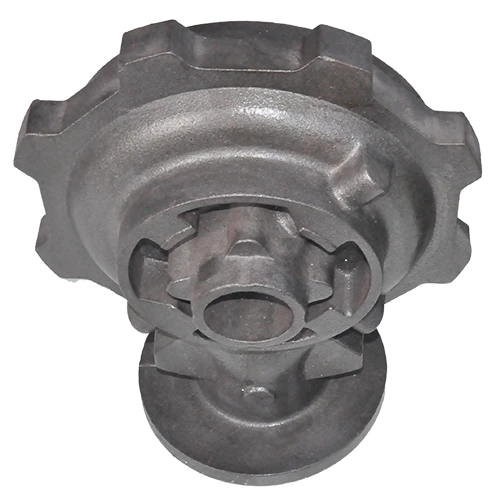Mobile:+86-311-808-126-83
Email:info@ydcastings.com
Exploring V6 Engine Exhaust Manifold Performance and Design Features for Enhanced Efficiency
Understanding V6 Exhaust Manifolds
The exhaust manifold is a critical component in any internal combustion engine, and this importance is amplified in V6 engines, which offer a unique balance between performance and efficiency. Understanding the role and design of V6 exhaust manifolds can provide insights into their functionality, benefits, and the engineering considerations behind their construction.
What is an Exhaust Manifold?
An exhaust manifold is responsible for collecting exhaust gases from multiple cylinders of an engine and channeling them into a single exhaust outlet. In a V6 engine, which typically features six cylinders arranged in a V configuration, the exhaust manifold plays a crucial role in maintaining optimal engine performance, managing emissions, and enhancing turbocharged systems in certain applications.
Design and Functionality
V6 exhaust manifolds come in various shapes and materials, including cast iron, stainless steel, and mild steel. The choice of material impacts weight, heat resistance, and durability. Cast iron is often favored for its durability and cost-effectiveness, while stainless steel may be chosen for its lightweight and corrosion-resistant properties.
The design of the manifold is not merely aesthetic; it significantly influences engine breathing and performance. Effective manifolds are engineered to minimize back pressure, which can hinder engine efficiency. A well-designed V6 exhaust manifold usually features smooth, rounded curves that allow for a more efficient flow of exhaust gases. Some performance-oriented designs even incorporate equal-length runners, which help to optimize exhaust scavenging and enhance power delivery across the engine’s RPM range.
Key Benefits of V6 Exhaust Manifolds
1. Improved Performance By allowing exhaust gases to escape more efficiently, a well-designed V6 exhaust manifold can contribute to improved engine performance. Enhanced exhaust flow can result in better throttle response and increased horsepower, particularly at higher RPMs.
v6 exhaust manifold

2. Better Fuel Efficiency As exhaust gases exit the engine more efficiently, the engine can operate at a more optimal air-fuel mixture. This efficiency can lead to better fuel mileage, making V6 engines appealing for both performance enthusiasts and everyday drivers alike.
3. Reduced Emissions Improved exhaust flow also helps in controlling emissions. By facilitating quicker expulsion of exhaust gases, V6 exhaust manifolds support better combustion processes that can lead to lower emissions of harmful pollutants.
4. Compatibility with Turbocharging V6 engines are often found in turbocharged applications, which further underscores the importance of an effective exhaust manifold. Turbochargers rely on exhaust gases to spin their turbines, and a well-designed manifold ensures that enough gas flows to maintain boost pressure, enhancing overall performance.
Performance Upgrades and Aftermarket Options
Car enthusiasts often explore aftermarket options for V6 exhaust manifolds to improve performance and alter the sound profile of their vehicles. Upgrading to a performance exhaust manifold can yield significant gains, particularly when paired with other modifications such as cold air intakes and tuned engine management systems.
These performance manifolds often feature larger diameter tubing and more aggressive designs, which can further optimize exhaust flow. However, it’s essential to consider the complete exhaust system when upgrading; a high-performance manifold may require matching enhancements downstream, including catalytic converters and mufflers, to fully realize performance benefits.
Conclusion
In summary, the V6 exhaust manifold is an essential component that significantly affects the overall performance, efficiency, and emissions of a V6 engine. Understanding its design and function can help enthusiasts and engineers alike appreciate the intricate balance between form, function, and performance in engine design. As automotive technology continues to advance, the role of exhaust manifolds will undoubtedly evolve, but the fundamental principles of efficient exhaust flow will remain a cornerstone of engine performance.
-
Understanding Metal Casting TechniquesNewsApr.02,2025
-
Understanding Exhaust Manifolds for Enhanced Engine PerformanceNewsApr.02,2025
-
The World of Metal FabricationNewsApr.02,2025
-
Key Components for Pump and Turbo EfficiencyNewsApr.02,2025
-
Essential Tools for Automotive Maintenance and RepairNewsApr.02,2025
-
Durable Valve Components for Effective Water ManagementNewsApr.02,2025











